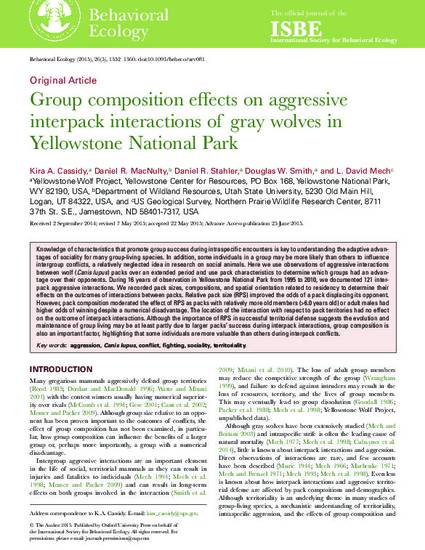
Article
Group composition effects on aggressive interpack interactions of gray wolves in Yellowstone National Park
Behavioral Ecology
(2015)
Abstract
Knowledge of characteristics that promote group success during intraspecific encounters is key to understanding the adaptive advantages of sociality for many group-living species. In addition, some individuals in a group may be more likely than others to influence intergroup conflicts, a relatively neglected idea in research on social animals. Here we use observations of aggressive interactions between wolf (Canis lupus) packs over an extended period and use pack characteristics to determine which groups had an advantage over their opponents. During 16 years of observation in Yellowstone National Park from 1995 to 2010, we documented 121 interpack aggressive interactions. We recorded pack sizes, compositions, and spatial orientation related to residency to determine their effects on the outcomes of interactions between packs. Relative pack size (RPS) improved the odds of a pack displacing its opponent. However, pack composition moderated the effect of RPS as packs with relatively more old members (>6.0 years old) or adult males had higher odds of winning despite a numerical disadvantage.
Disciplines
Publication Date
2015
DOI
10.1093/beheco/arv081
Citation Information
Dan R. MacNulty. "Group composition effects on aggressive interpack interactions of gray wolves in Yellowstone National Park" Behavioral Ecology Vol. 26 Iss. 5 (2015) p. 1352 - 1360 Available at: http://works.bepress.com/dan_macnulty/68/
